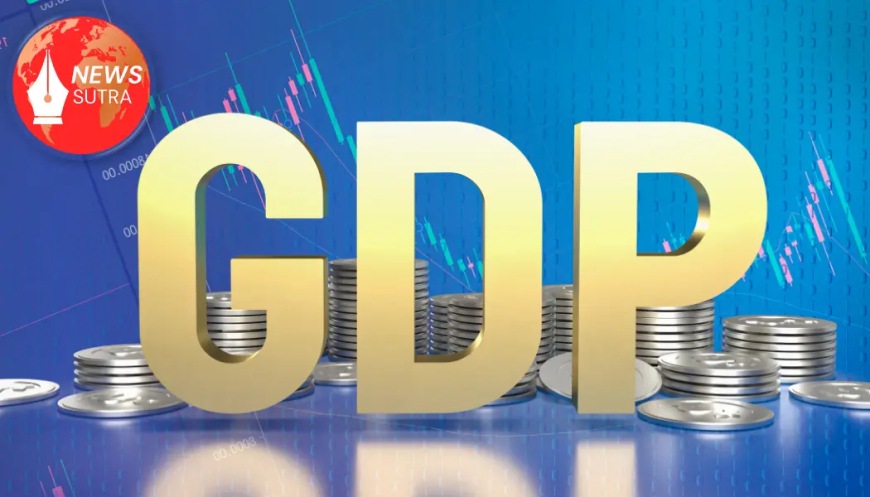India’s 7% GDP Growth in Q1 FY25: A Closer Look at What the Numbers Don’t Reveal
India’s GDP grew 7% in Q1 FY25, but is this growth truly reflective of economic reality? A detailed analysis of underlying metrics, sectoral disparities, and policy implications.

India’s 7% GDP Growth in Q1 FY25: A Closer Look at What the Numbers Don’t Reveal
India’s GDP growth rate of 7% in the first quarter of FY25 made headlines and stirred optimism among policymakers and investors. But behind the celebratory statistics lies a more nuanced picture that calls for careful scrutiny. In this article, we unpack the finer details of the GDP data, explain why the headline number might be misleading, and explore the broader economic context that paints a less rosy scenario.
The Headline Number: 7% GDP Growth
According to the Ministry of Statistics and Programme Implementation (MoSPI), India's GDP at constant prices (2011–12 base year) increased by 7% year-on-year during the April-June 2025 quarter. This puts India ahead of many major economies in terms of growth velocity. However, a deeper dive into the composition of this growth reveals significant concerns.
1. Base Effect Is Doing the Heavy Lifting
The most overlooked factor in this 7% figure is the base effect. In Q1 FY24, GDP grew by 6.1%, but that growth followed a series of underwhelming quarters impacted by inflationary pressures, subdued consumer demand, and weak exports. When a previous period's performance is low, even modest growth in the current period appears inflated in percentage terms.
Why it matters:
Relying on the base effect to showcase economic improvement creates a perception gap between real growth and statistical exaggeration. As Rathin Roy from the Centre for Public Policy Research puts it, “We are seeing statistical resilience, not necessarily structural growth.”
2. Disparities Across Sectors: Who’s Really Growing?
While overall GDP shows growth, sectoral data reveals a skewed picture:
-
Manufacturing grew at 8.4%, yet much of this came from large corporates with access to global capital. MSMEs, which employ the bulk of India’s workforce, continue to struggle.
-
Agriculture posted a modest 1.2% growth, impacted by erratic monsoon patterns and rising input costs.
-
Construction and real estate surged, but this was largely driven by urban housing markets in tier-1 cities, not broad-based infrastructure development.
-
Private consumption, which makes up 55-60% of GDP, grew only 2.8%—a warning sign that household financial health is under stress.
India Ratings and Research highlights that consumer demand in rural areas remains tepid despite rising headline GDP, indicating unequal recovery.
3. Jobless Growth and Unemployment Pains
A strong GDP figure typically correlates with job creation—but that hasn’t happened here. According to the Centre for Monitoring Indian Economy (CMIE), the unemployment rate rose to 8.1% in May 2025. High youth unemployment and informal sector distress persist despite the official numbers painting a picture of economic expansion.
Key Insight:
The growth is not employment-intensive, suggesting productivity gains in capital-heavy sectors rather than broad-based employment generation. This has deep implications for income distribution and social stability.
4. Real vs Nominal GDP: Inflation Is a Distortion
Another key issue is the gap between real and nominal GDP. While real GDP is adjusted for inflation, nominal GDP tells us the market value of output. For Q1 FY25, nominal GDP grew at just 8.1% compared to 13.2% in the same quarter last year. This reflects both disinflation and weak pricing power across sectors.
A lower GDP deflator (the ratio of nominal to real GDP) indicates that much of the real growth came from falling prices, not increased productivity or demand.
5. Investment vs Consumption: A Lopsided Equation
Investment—especially from public sector capex—remains a key driver of growth. Government expenditure on infrastructure is fueling activity, but this is not being matched by a rise in private consumption or private investment.
A RBI bulletin in May 2025 observed that corporate investment sentiment remains cautious amid global uncertainties and rising interest rates. If the engine of private demand doesn't fire soon, sustainability of this growth will be questionable.
6. External Sector Drag
India’s exports fell by 2.4% in Q1 FY25, largely due to weak global demand and geopolitical tensions. Services exports remained stable, but merchandise exports continued to decline. Import compression, driven by weak domestic demand, artificially improved trade balances but signals weakness in the broader economy.
EXIM Bank’s analysis warns that without external demand recovery, India’s export sector may continue to act as a drag on GDP growth.
7. Fiscal and Policy Implications
With general elections looming, the government’s fiscal strategy will be under pressure. A strong headline growth gives political cover for continued public spending, but without structural reforms or private sector revival, this may lead to long-term fiscal slippage.
Moody’s and S&P Global Ratings have noted India’s fiscal deficit remains higher than other emerging economies, suggesting caution in interpreting GDP figures as a sign of economic invulnerability.
Conclusion: Growth Without Depth?
India’s Q1 FY25 GDP growth number may look like a win on paper, but real economic strength comes from sustained, inclusive, and employment-rich growth. Policymakers and investors must look beyond the top-line number to understand the true pulse of the economy.
It’s essential to distinguish between headline growth and healthy growth. As India positions itself as a global economic power, the focus must shift to structural reforms, rural and urban job creation, improved public services, and equitable income distribution.
What's Your Reaction?
 Like
0
Like
0
 Dislike
0
Dislike
0
 Love
0
Love
0
 Funny
0
Funny
0
 Angry
0
Angry
0
 Sad
0
Sad
0
 Wow
0
Wow
0







































































